Related Research Articles

The bunyip is a creature from the aboriginal mythology of southeastern Australia, said to lurk in swamps, billabongs, creeks, riverbeds, and waterholes.

Clotho or Klotho, is a mythological figure. She is the youngest goddess of the Three Fates or Moirai. In ancient Greek mythology, she spins the thread of human life, her sisters draw out (Lachesis) and cut (Atropos) the thread. Her Roman equivalent is Nona. She also made major decisions, such as when a person was born, thus in effect controlling people's lives. This power enabled her not only to choose who was born, but also to decide when deities or mortals were to be saved or put to death. For example, Clotho resurrected Pelops when his father killed him.
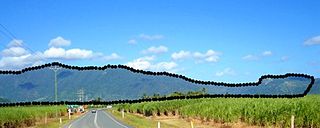
Australian Aboriginal religion and mythology is the sacred spirituality represented in the stories performed by Aboriginal Australians within each of the language groups across Australia in their ceremonies. Aboriginal spirituality includes the Dreamtime, songlines, and Aboriginal oral literature.

The Dreaming, also referred to as Dreamtime, is a term devised by early anthropologists to refer to a religio-cultural worldview attributed to Australian Aboriginal beliefs. It was originally used by Francis Gillen, quickly adopted by his colleague Sir Baldwin Spencer and thereafter popularised by A. P. Elkin, who, however, later revised his views.
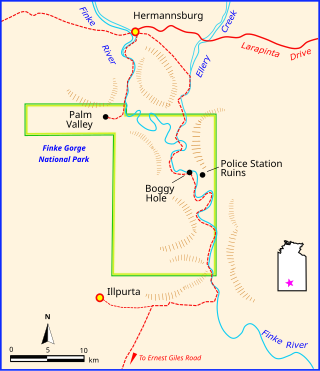
Finke Gorge National Park is a protected area in the Northern Territory of Australia located about 1,318 kilometres (819 mi) south of the territory capital of Darwin. The national park covers an area of 458 km2 (177 sq mi), and includes the desert oasis Palm Valley, home to a diverse range of plant species, many of which are rare and unique to the area. There are good opportunities for bushwalking and bushcamping in the national park.

Little people have been part of the folklore of many cultures in human history, including Ireland, Greece, the Philippines, the Hawaiian Islands, New Zealand, Flores Island, Indonesia, and Native Americans.
A songline, also called dreaming track, is one of the paths across the land within the animist belief systems of the Aboriginal cultures of Australia. They mark the route followed by localised "creator-beings" in the Dreaming. These routes serve as crucial connections between individuals and their ancestral lands, carrying intricate geographical, mythological, and cultural information.
The Muldjewangk is a water-creature in Ngarrindjeri mythology that inhabited the Murray River, particularly Lake Alexandrina. It was used as a deterrent for Aboriginal children who wished to play near the riverside after dark. Sometimes they are portrayed as evil merfolk, and other times as a gargantuan monster. Accounts are inconsistent as to whether there are many of the creatures, or a single "The Muldjewangk".

The Rainbow Serpent or Rainbow Snake is a common deity often seen as the creator God, known by numerous names in different Australian Aboriginal languages by the many different Aboriginal peoples. It is a common motif in the art and religion of many Aboriginal Australian peoples. Much like the archetypal mother goddess, the Rainbow Serpent creates land and diversity for the Aboriginal people, but when disturbed can bring great chaos.
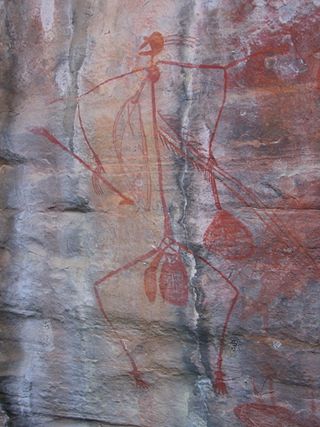
The prehistory of Australia is the period between the first human habitation of the Australian continent and the colonisation of Australia in 1788, which marks the start of consistent written documentation of Australia. This period has been variously estimated, with most evidence suggesting that it goes back between 50,000 and 65,000 years. This era is referred as prehistory rather than history because knowledge of this time period does not derive from written documentation. However, some argue that Indigenous oral tradition should be accorded an equal status.
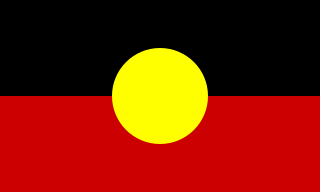
Aboriginal Australians are the various Indigenous peoples of the Australian mainland and many of its islands, excluding the ethnically distinct people of the Torres Strait Islands.

The Nargun and The Stars is a children's fantasy novel set in Australia, written by Patricia Wrightson. It was among the first Australian books for children to draw on Australian Aboriginal mythology. The book was the winner of the 1974 Children's Book Council of Australia Children's Book of the Year Award for Older Readers, and Patricia Wrightson was awarded an Order of the British Empire in 1977, largely for this work.

Patricia Wrightson OBE was an Australian writer of several highly regarded and influential children's books. Employing a 'magic realism' style, her books, including the award-winning The Nargun and the Stars (1973), were among the first Australian books for children to draw on Australian Aboriginal mythology. Her 27 books have been published in 16 languages.

Australia, officially the Commonwealth of Australia, is a country comprising the mainland of the Australian continent, the island of Tasmania, and numerous smaller islands. Australia is the largest country by area in Oceania and the world's sixth-largest country. Australia is the oldest, flattest, and driest inhabited continent, with the least fertile soils. It is a megadiverse country, and its size gives it a wide variety of landscapes and climates including deserts and tropical rainforests.

Corvus is a widely distributed genus of passerine birds ranging from medium-sized to large-sized in the family Corvidae. It includes species commonly known as crows, ravens, and rooks. The species commonly encountered in Europe are the carrion crow, hooded crow, common raven, and rook; those discovered later were named "crow" or "raven" chiefly on the basis of their size, crows generally being smaller. The genus name is Latin for "raven".

The Wemba-Wemba are an Aboriginal Australian people in north-Western Victoria and south-western New South Wales, Australia, including in the Mallee and the Riverina regions. They are also known as the Wamba-Wamba.
Thinan-malkia is an evil spirit in Australian Aboriginal mythology that captures victims with nets that entangle their feet.
The Yir-Yoront, also known as the Yir Yiront, are an Indigenous Australian people of the Cape York Peninsula now living mostly in Kowanyama but also in Lirrqar/Pormpuraaw, both towns outside their traditional lands.

Australian mythology stems largely from Europeans who colonised the country from 1788, subsequent domestic innovation, as well as other immigrant and Indigenous Australian traditions, many of which relate to Dreamtime stories. Australian mythology survives through a combination of word of mouth, historical accounts and the continued practice and belief in Dreamtime within Aboriginal communities.
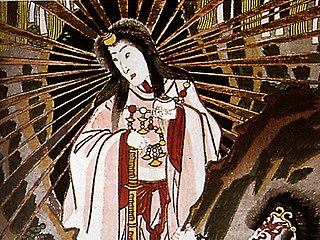
An akuma (悪魔) is an evil spirit in Japanese folklore, sometimes described in English-language sources as a devil or demon. An alternative name for the akuma is ma (ま). Akuma is the name assigned to Satan in Japanese Christianity, and the Mara in Japanese Buddhism.
References
- ↑ Mercatante, Anthony S. (2009). The Facts on File encyclopedia of world mythology and legend. New York : Facts On File. p. 635. ISBN 978-0-8160-7311-5.
- ↑ Jones, Alison (1996). Larousse dictionary of world folklore. Edinburgh ; New York, N.Y : Larousse. ISBN 978-0-7523-0043-6.